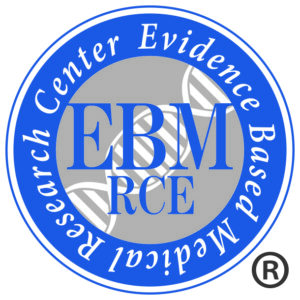
世界で初めて難病とされた「胆嚢腺扁平上皮癌」を、他臓器合併拡大手術で治癒すると報告した学会発表とその和訳。
Adenosquamous carcinoma of the gallbladder.
Motoi kondo MD Phd
Abstract
BACKGROUND/AIMS: Adenosquamous carcinoma of the gallbladder is relatively rare. Its biological behavior and optimal surgical procedure are still controversial.
METHODOLOGY: Clinicopathological factors and proliferating cell nuclear antigen expression were studied in four stage IV adenosquamous carcinoma patients who underwent curative surgery between June 1987 and April 2000, comparing those of 14 stage IV adenocarcinoma patients at the same period.
RESULTS: Preoperative radiological evaluation disclosed a mass invading to the adjacent organs in all cases (liver in 3 cases, and liver and stomach in one case). Three patients (case 1, 2 and 3: well-differentiated adenosquamous carcinomas) were all alive without recurrence in 10, 7, and 2 years after surgery. In contrast, the remaining patient (case 4: moderately differentiated adenosquamous carcinoma) with positive pathologic factors (lymph node metastasis, vascular invasion, etc) deceased one year after surgery due to peritoneal dissemination. When survival rate of adenosquamous carcinoma was compared, the prognosis of adenosquamous carcinoma was significantly better than that of adenocarcinoma (P = 0.0103). Comparison of pathological factors revealed that the frequency of lymph node metastasis was significantly higher in adenocarcinoma than in adenosquamous carcinoma (P = 0.004). Consistent with these findings, the positivity rate of proliferating cell nuclear antigen labeling was significantly lower in squamous carcinoma component, compared with adenosquamous component (P < 0.0001) or adenocarcinoma (P < 0.0001).
CONCLUSIONS: Even in patients with stage IV adenosquamous carcinoma of the gallbladder, a long-term survival may be obtained by curative surgery if the squamous component is predominant.
Gastroenterology 118(4)・April 2000
Adenosquamouscarcinoma of the gallbladder
Motoi Kondo, Keizo Dono, Junzo Shimizu, Hiroaki Nagano, Shoji Nakamori, Koji Umeshita, Masato Sakon, Morito Monden
Gastroenterology : 2021-2022年最新のインパクトファクター
22.682 (2022年の最新データ)
胆嚢線扁平上皮癌
大阪大学医学部第二外科
近藤 礎、堂野 恵三、左近 賢人、清水 潤三、永野 浩昭、中森 正二、梅下 浩司、門田 守人
【目的】
胆嚢線扁平上皮癌の病態把握と治療戦略の一助とすべく、自験例に臨床・病理・免疫学的検討を加え、いかに対処すべきかを検討した。
【対象】
1982年以降1998年8月末までに、阪大病院で治癒切除を実施した胆嚢線扁平上皮癌の4例。
【方法】
対象例に臨床・病理学的検討を加え、ついで根治度と病期で背景を揃えた胆嚢線癌の16例と予後ならびにPCNA・MIB-1による細胞増殖活性を比較した。
【結果】
①4例共が隣接臓器への直連浸潤(肝臓/4例、十二指腸/1例)を有するstageⅣであった。遠隔転移、腹膜播種はなく1例にリンパ節転移を認めた。予後を見ると、高分化型で絶対的治癒切除の2例は4年間と7年間の無再発生存、高分化型>中分化型で絶対的治癒切除の1例は術後3ヵ月無再発生存、中分化型腺癌のリンパ節転移を認めた相対的治癒切除の1例は術後1年目に局所再発(癌性腹膜炎)で死亡していた。
②PCNA・MIB-1による細胞増殖活性の比較では両群間に有意差を認めず、Kaplan-Meier法による累積生存曲線の比較では線扁平上皮癌症例が有意に予後良好であった。
【結論】
今後、以下の点に注意すべきである。
画像診断で隣接臓器への直達浸潤を疑う胆嚢病変では線扁平上皮癌可能性を考慮する。
高分化型の進行胆嚢線扁平上皮癌であれば、局所切除により長期生存しえる可能性があり、根治術を配慮する。
